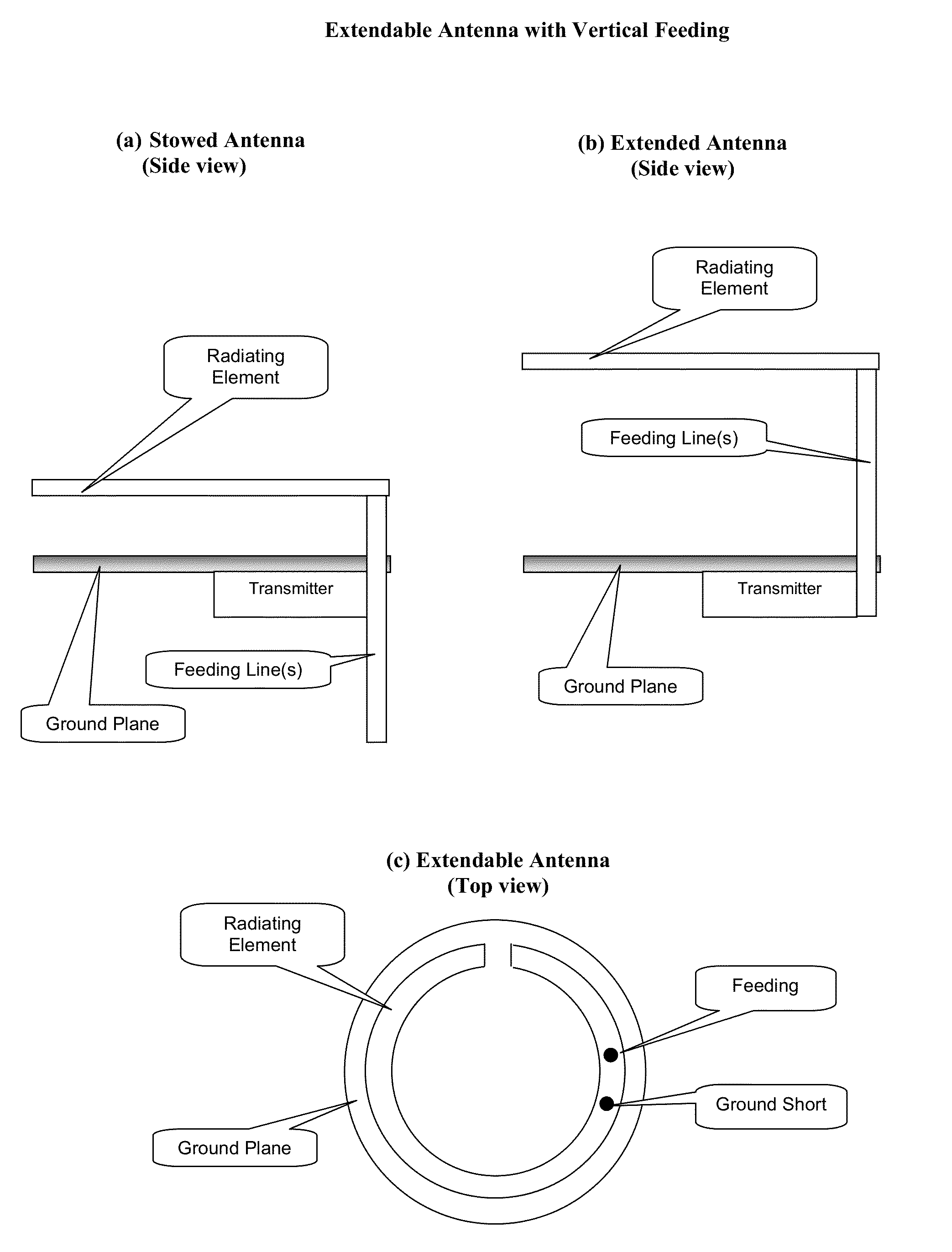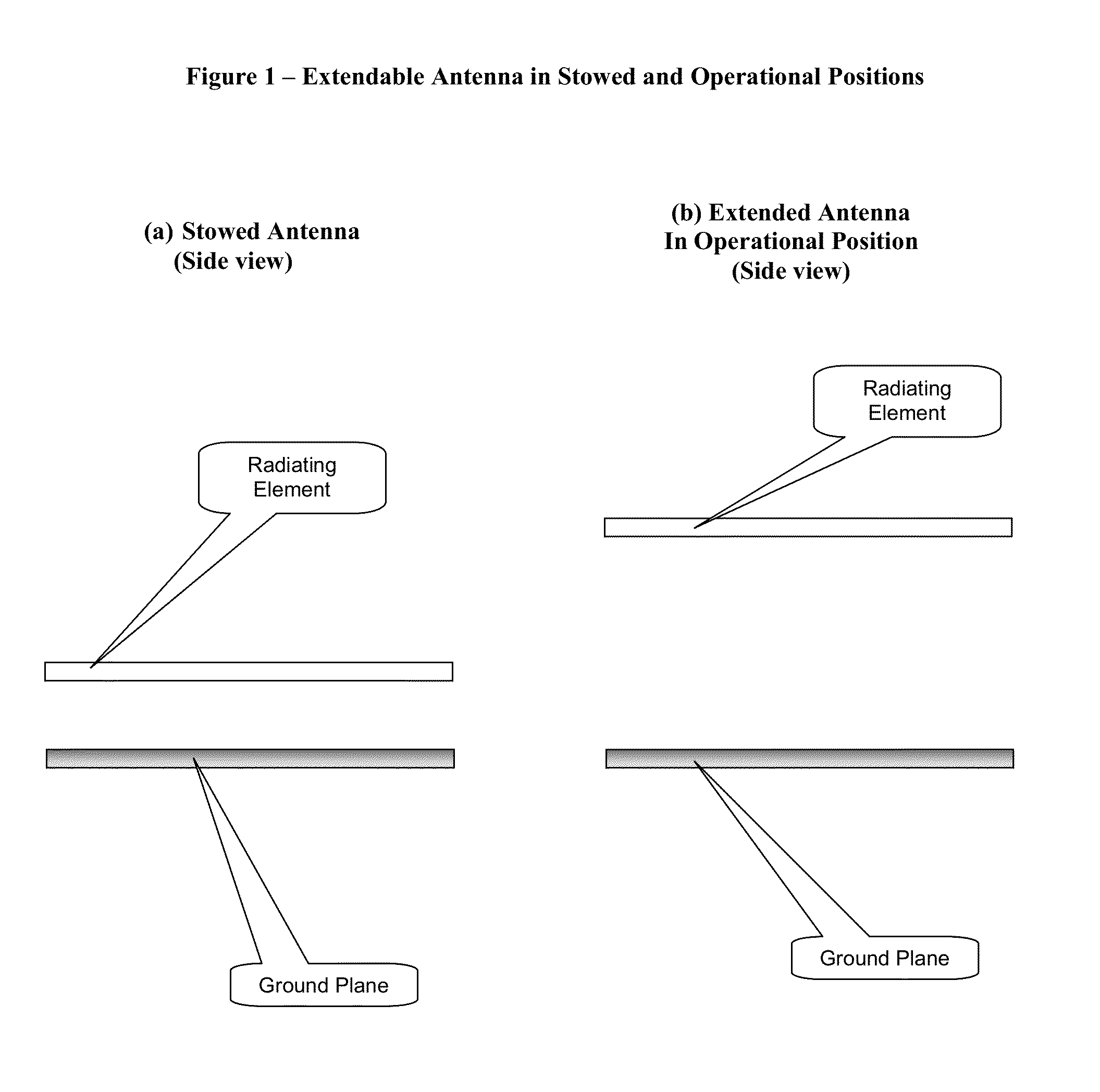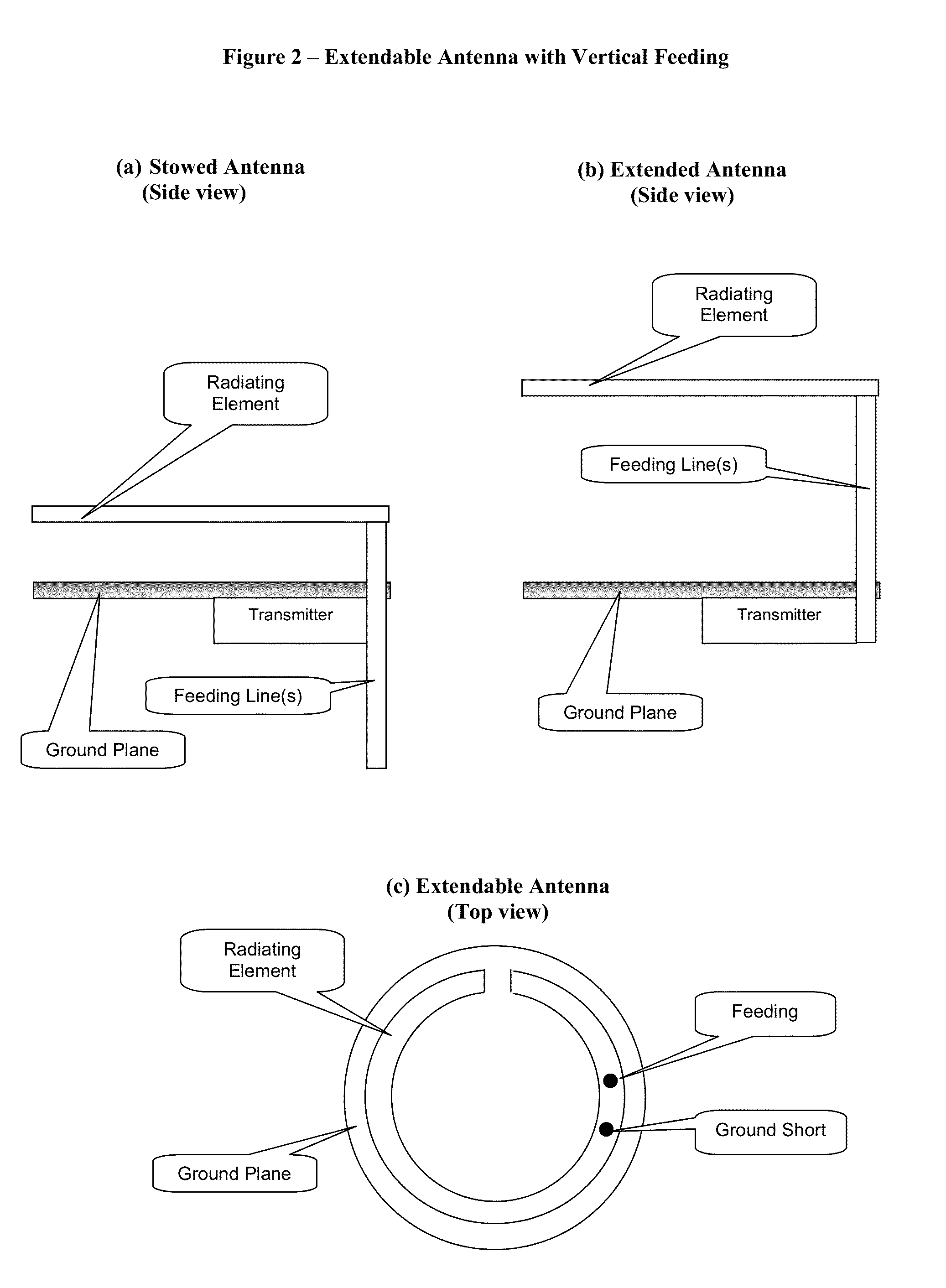Extendable Loop Antenna for Portable Communication Device
a portable communication device and loop antenna technology, applied in the field of wireless communication, can solve the problems of limiting the miniaturization of the electrical size of the antenna, reducing the efficiency of the antenna, and unable to achieve the efficient antenna for a relatively low frequency (i.e. long wavelength), and achieves low rf resistance, high efficiency, and large surface area
- Summary
- Abstract
- Description
- Claims
- Application Information
AI Technical Summary
Benefits of technology
Problems solved by technology
Method used
Image
Examples
second embodiment
[0089]According to the present invention, said radiating element is made of a flat conductor configured in form of a loop.
third embodiment
[0090]According to the present invention, said radiating element is made of a solid conductor configured in form of a loop.
[0091]According to said first and second and third embodiments, the antenna is configured to operate in the band of 406.0-406.1 MHz (at least), which is the band allocated to the Cospas-Sarsat Search and Rescue (SAR) satellite system.
first embodiment
[0092]According to said first embodiment, the first radiating element is made of a hollow copper pipe with external diameter of 6 mm (¼ inch) and internal diameter of 4 mm, bent into a loop (circle) with an internal diameter of 50 mm. This loop is not closed, and a gap of about 2 mm is kept between its terminals, as shown in FIG. 3 (a).
[0093]FIG. 3 shows a Hollow Loop Radiating Element, according to the first embodiment of the present invention, in top view (a) and side view (b).
[0094]Further according to the first embodiment of the present invention, a capacitor of 1-3 pf is soldered between said loop terminals, as shown in FIG. 5.
[0095]Optionally, a resistor is placed in parallel to said capacitor to decrease the antenna quality factor (Q) and accordingly increase its band width, traded off for lower antenna efficiency.
[0096]According to said second embodiment, the first radiating element is made of a flat copper PCB trace with 6 mm of width, in form of a loop (circle) with an int...
PUM
 Login to View More
Login to View More Abstract
Description
Claims
Application Information
 Login to View More
Login to View More - R&D Engineer
- R&D Manager
- IP Professional
- Industry Leading Data Capabilities
- Powerful AI technology
- Patent DNA Extraction
Browse by: Latest US Patents, China's latest patents, Technical Efficacy Thesaurus, Application Domain, Technology Topic, Popular Technical Reports.
© 2024 PatSnap. All rights reserved.Legal|Privacy policy|Modern Slavery Act Transparency Statement|Sitemap|About US| Contact US: help@patsnap.com










